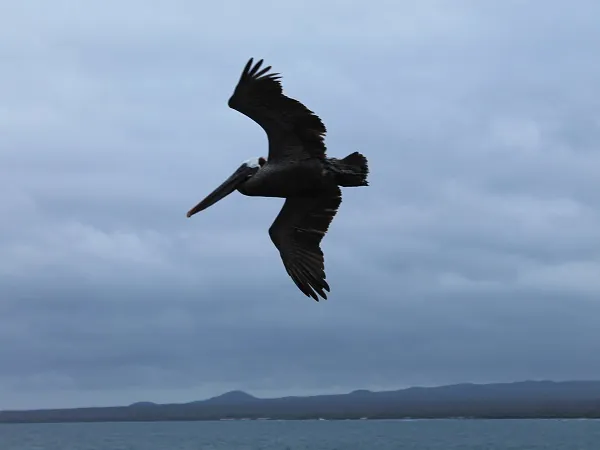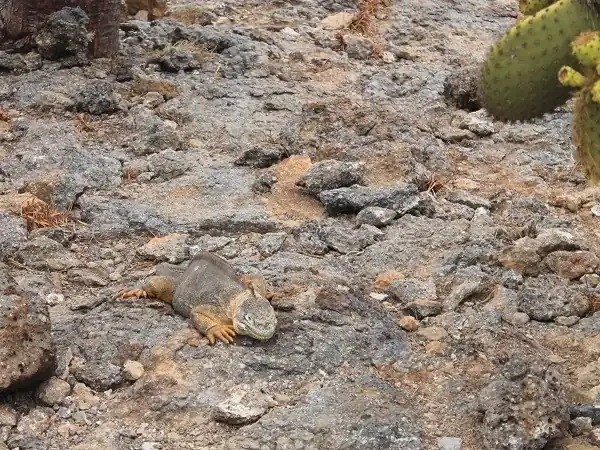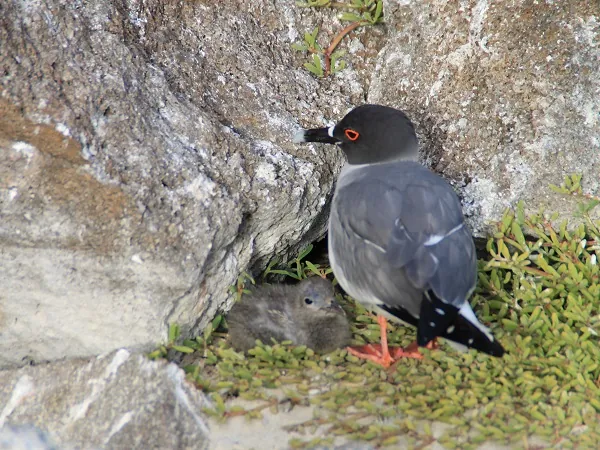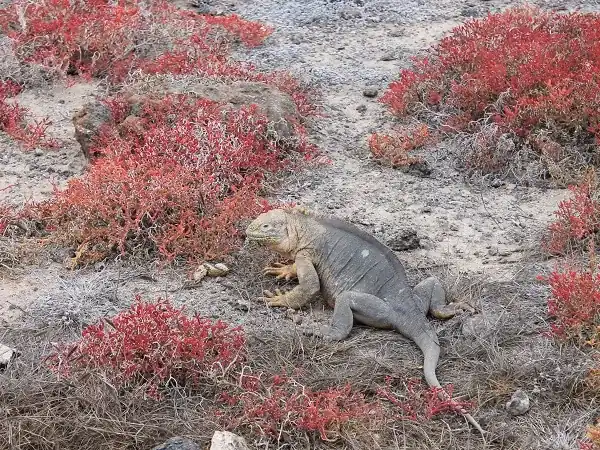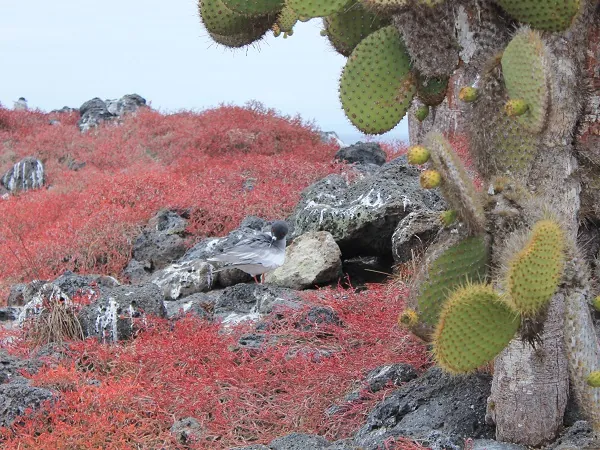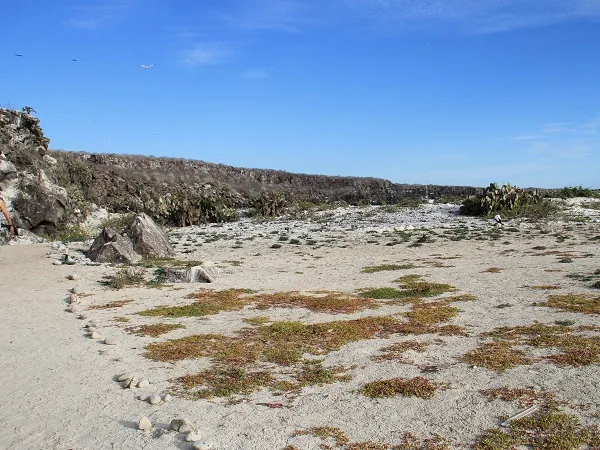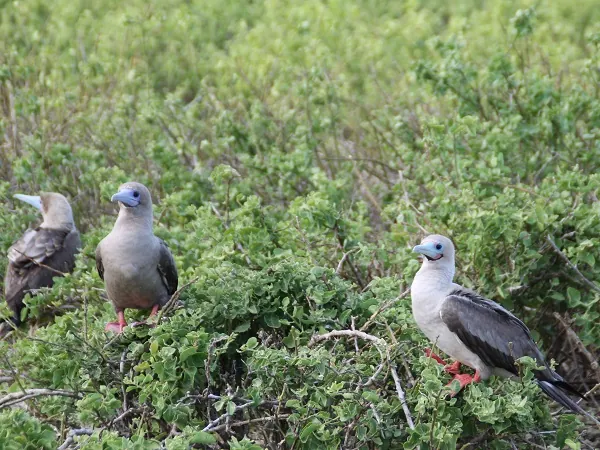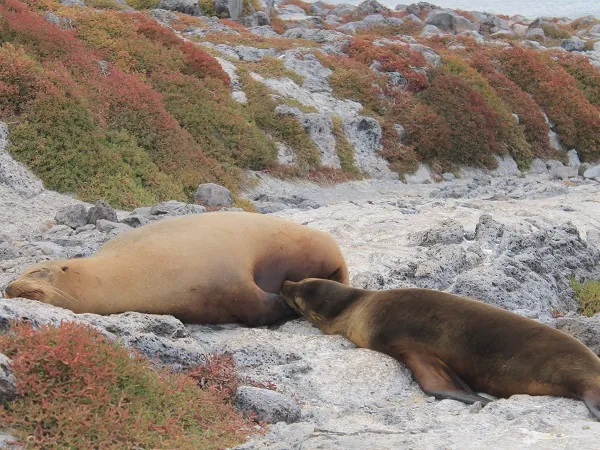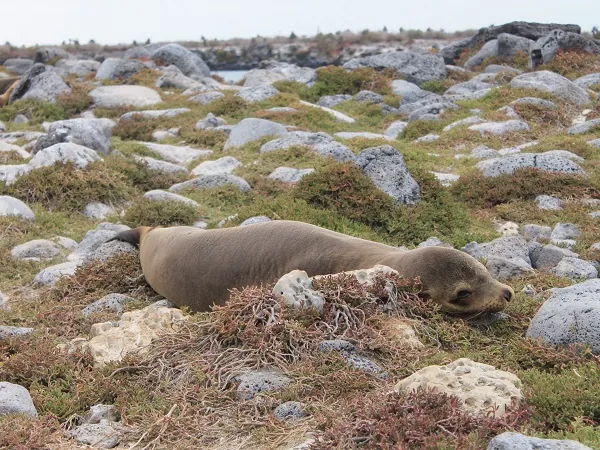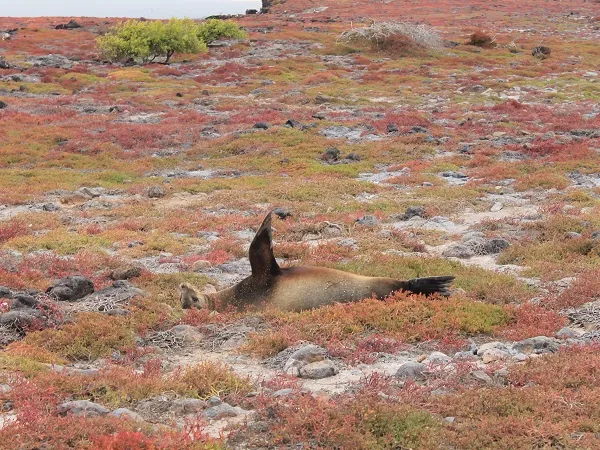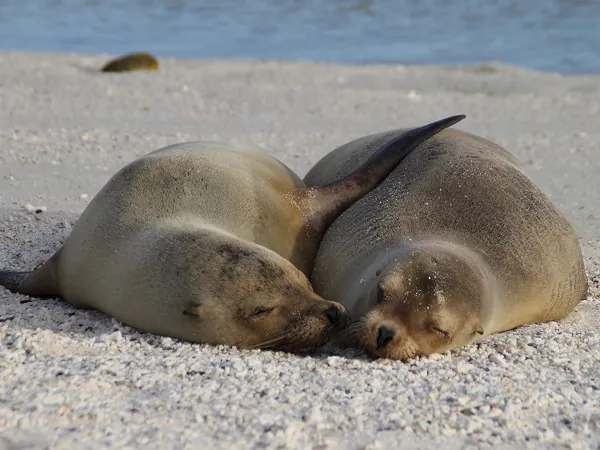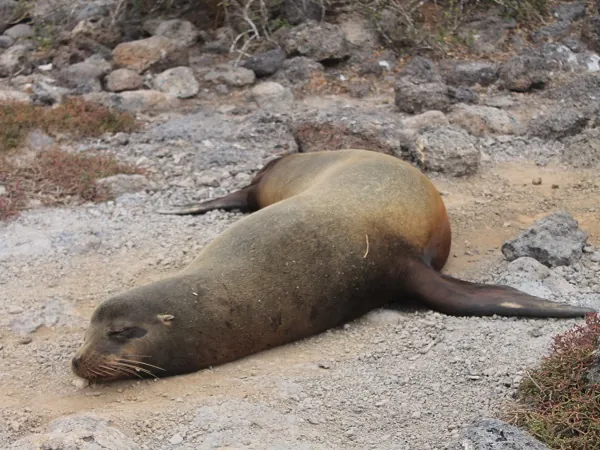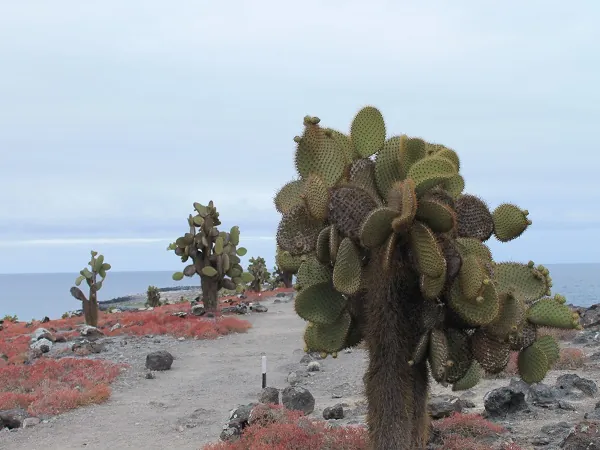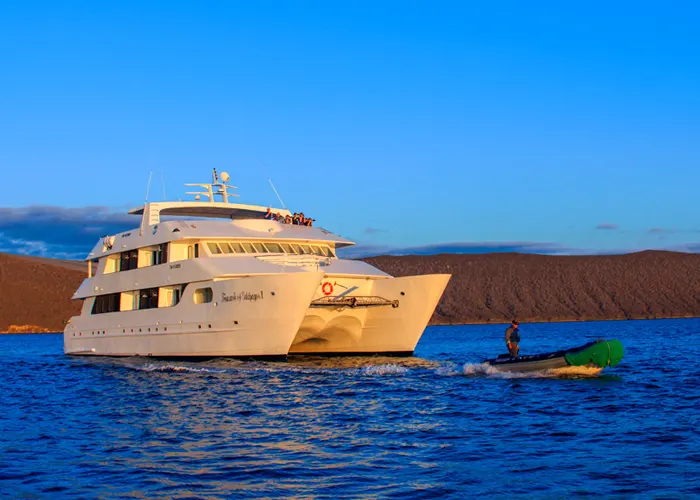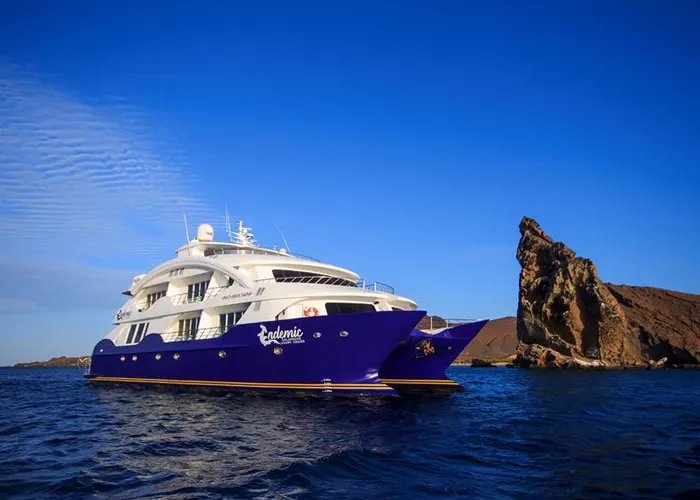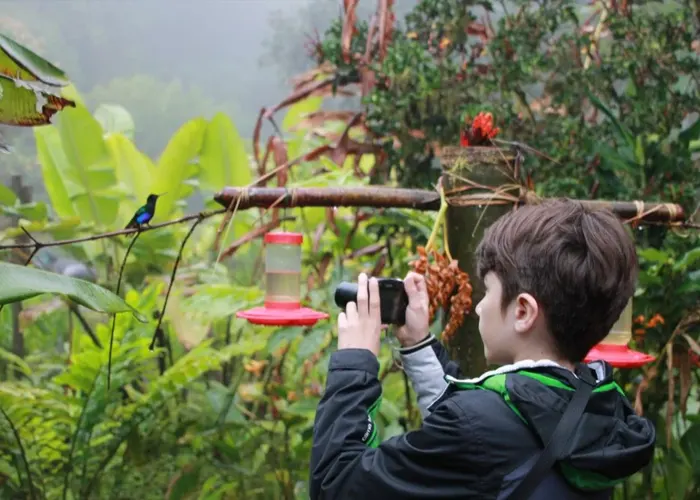South Plaza Island Galapagos
South plaza island
South Plaza Island Nature in its Splendor
- Area: 0,13 km²
- Highest point: 23 m
- Population: uninhabited
- Travel options: Cruise ship
Visitor highlights:
- Round trip on the island
- Important animals and plants: Sea lions, red-billed tropicbirds, frigate birds, brown pelicans, gannets, red clapper crabs, mockingbirds, Darwin’s finches, opuntia, sesuvium (carpetwort), rays, sharks.
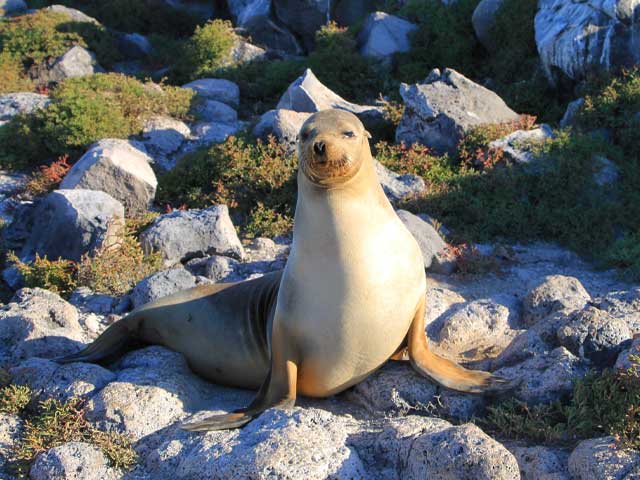
General information
The twin islands of South and North Plaza are located just a few hundred meters off the east coast of Santa Cruz. Only the southern island is accessible to visitors. The northern island is restricted to scientists only. The crescent-shaped South Plaza Island, like its northern counterpart, was not formed by volcanic activity like most Galapagos Islands, but rather by an uplift of the seabed. Despite its small size, it exhibits remarkably high biodiversity. Particularly characteristic is the Sesuvium carpet, which is brightly green or red depending on the season and covers large parts of the island. Along the coasts, many different species of seabirds can be observed, including storm petrels, frigatebirds, and brown pelicans.
South Plaza Island is a frequent stop on many cruises, such as the Yacht Infinity, the Seaman Journey catamaran, the Treasure of Galapagos, and the Mary Anne sailing ship.
Places to visit on South Plaza Island
Round trip on the island
After a dry landing, you can observe the often noisy colony of sea lions not far from the landing site. Approximately 1000 of these animals have been counted on the island. You can also encounter marine iguanas here. A circular path then leads you up the cliffs. Along the way, you walk between Sesuvium and under Opuntia cacti. Here, you are likely to come across a land iguana or two, waiting near the Opuntia for a fruit or flower to fall. The South Plaza land iguana is smaller than its counterparts on other islands.
From the cliffs, you can observe reef fish, sharks, and rays in the water below. Frigatebirds circle overhead, and the cliffs themselves are a popular nesting site for red-billed tropicbirds, swallow-tailed gulls, and pelicans.
